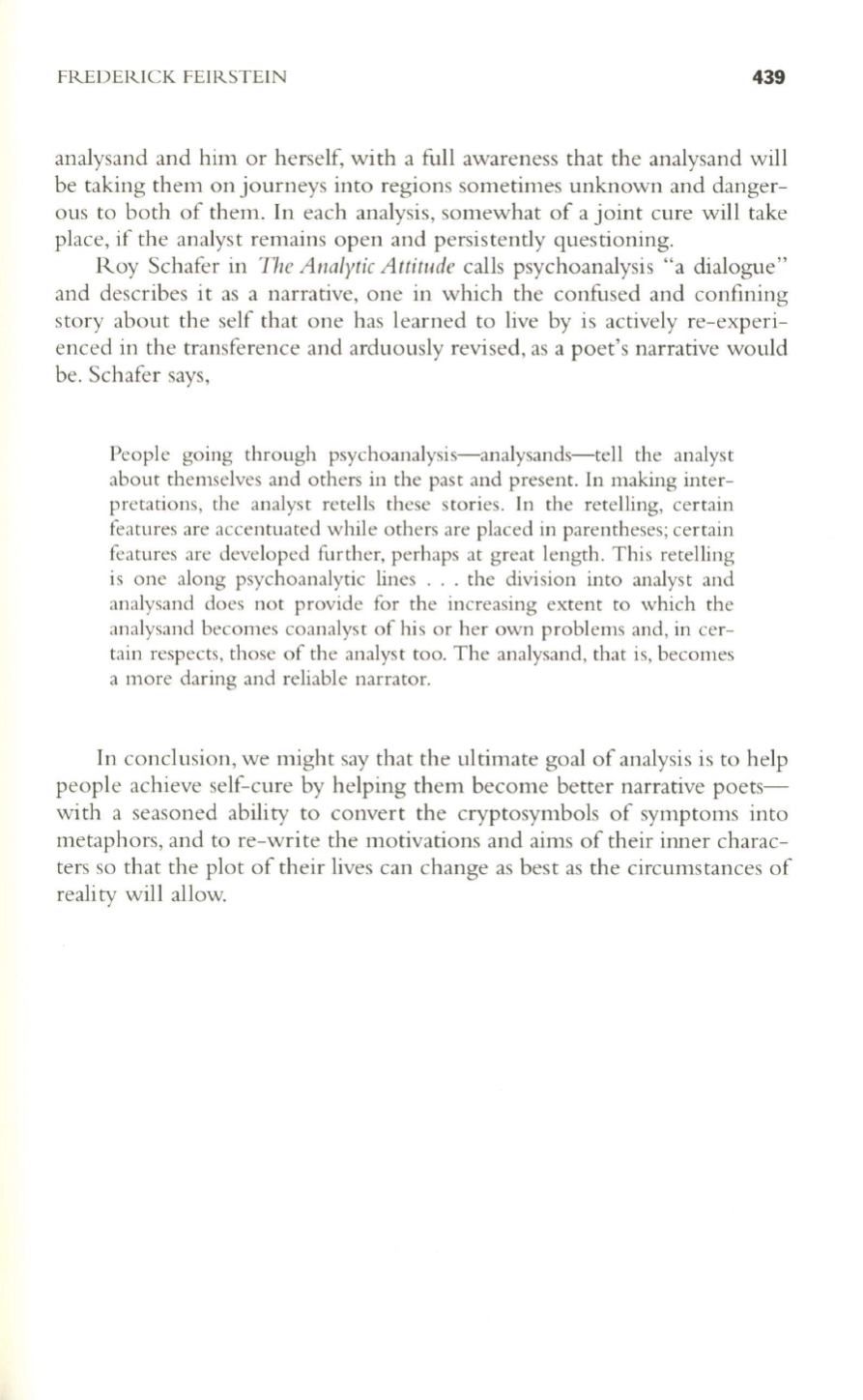
FREDERICK FEIRSTEIN
439
analysand and him or herself, with a full awareness that the analysand will
be taking them on journeys into regions sometimes unknown and danger–
ous to both of them. In each analysis, somewhat of a joint cure will take
place, if the analyst remains open and persistently questioning.
Roy Schafer in
The Analytic Attitude
calls psychoanalysis "a dialogue"
and describes it as a narrative, one in which the confused and confining
story about the self that one has learned to live by is actively re-experi–
enced in the transference and arduously revised, as a poet's narrative would
be. Schafer says,
People going through psychoanalysis-analysands-tell the analyst
about themselves and others in the past and present. In making inter–
pretations, the analyst retells these stories. In the retelling, certain
features are accentuated while others are placed in parentheses; certain
features are developed further, perhaps at great length. This retelling
is one along psychoanalytic lines ... the division into analyst and
analysand does not provide for the increasing extent
to
which the
analysand becomes coanalyst of his or her own problems and, in cer–
tain respects, those of the analyst too. The analysand, that is, becomes
a more daring and reliable narrator.
In conclusion, we might say that the ultimate goal of analysis is to help
people achieve self-cure by helping them become better narrative poets–
with a seasoned ability to convert the cryptosymbols of symptoms into
metaphors, and to re-write the motivations and aims of their inner charac–
ters so that the plot of their lives can change as best as the circumstances of
reali ty will allow.


